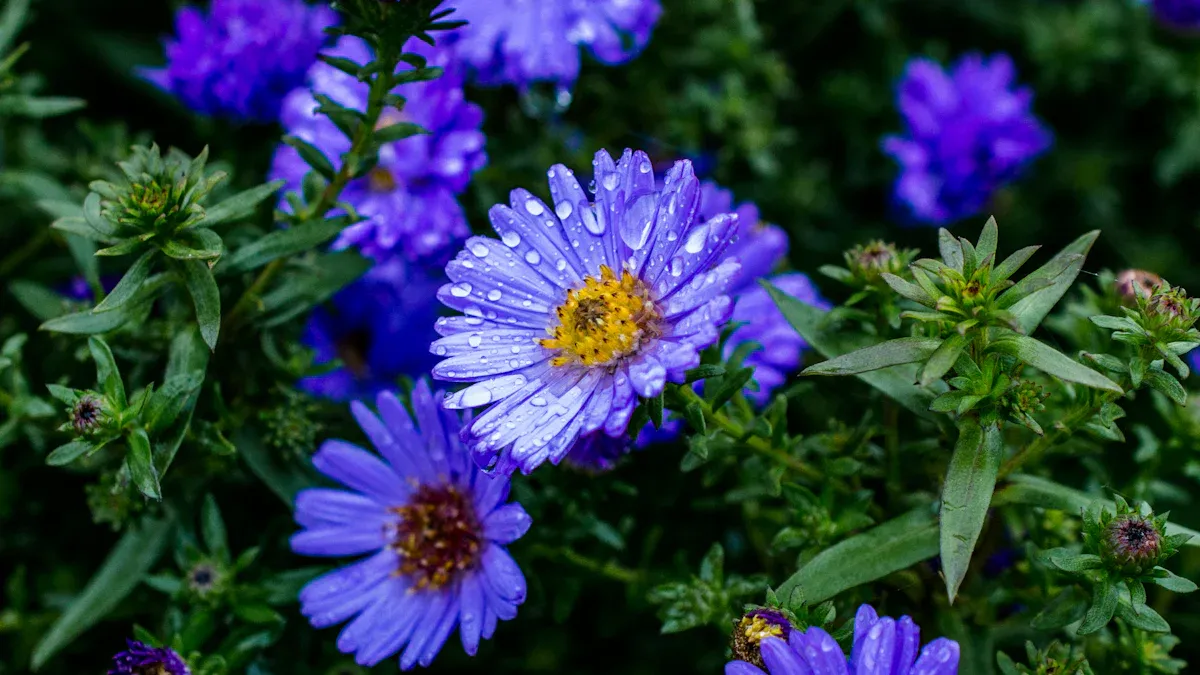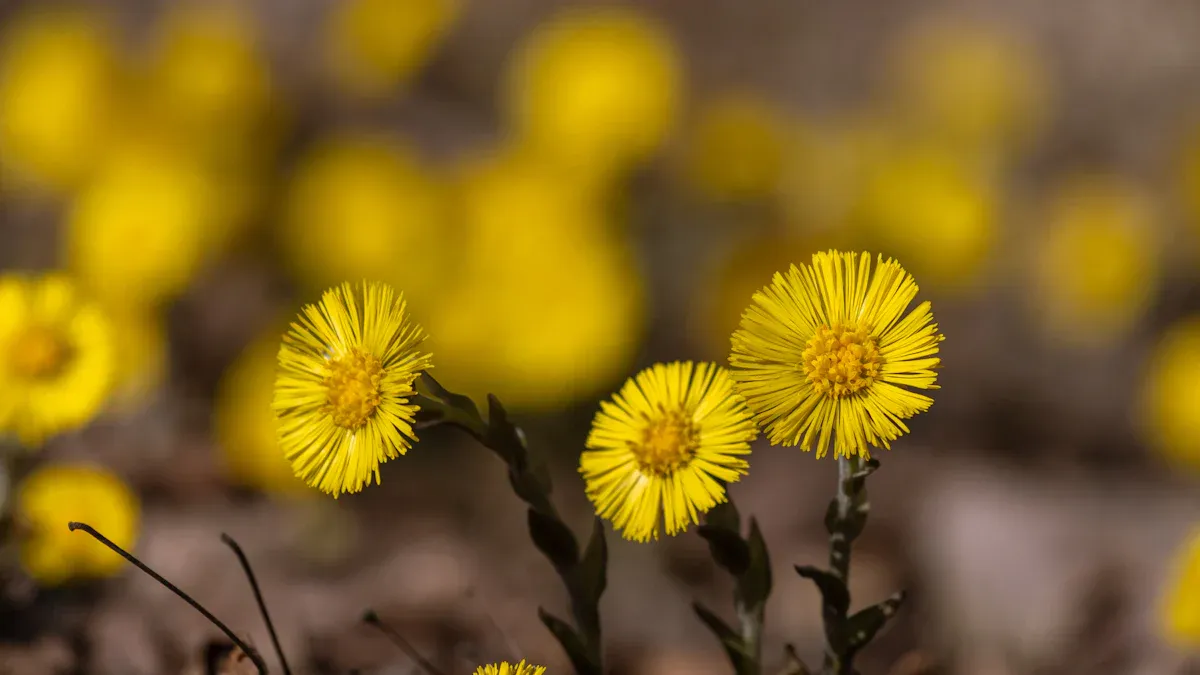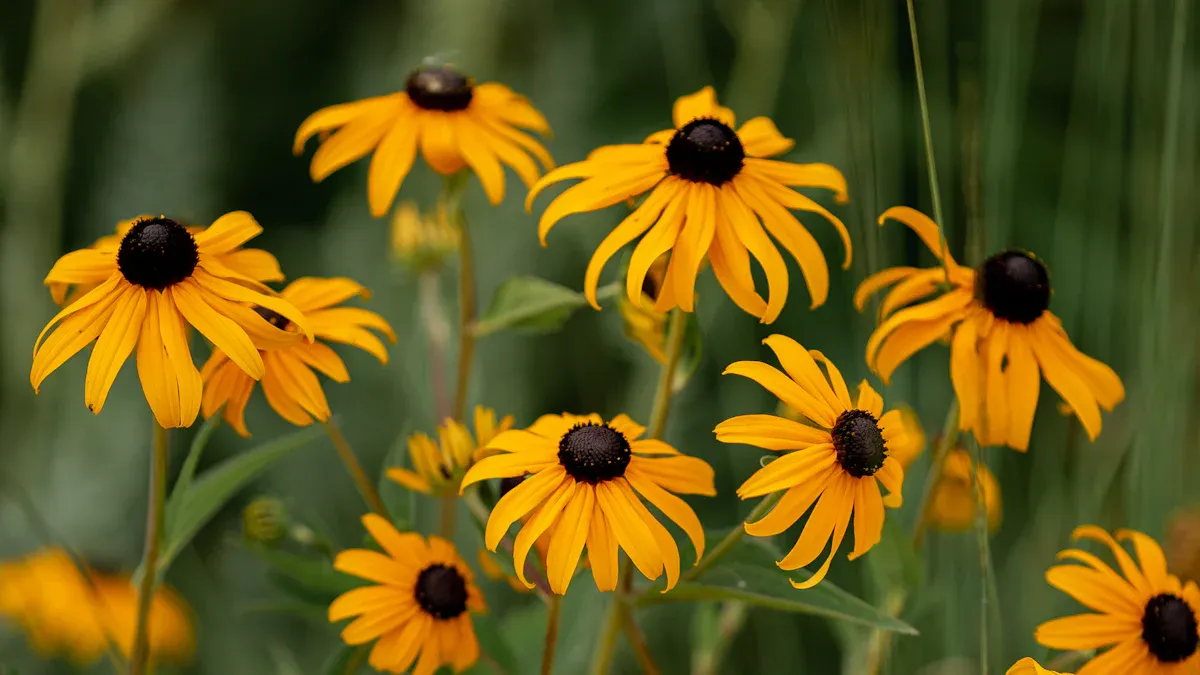
Vermont’s natural landscape bursts with vibrant wildflowers. You feel great joy identifying these beautiful native plants. They are crucial to Vermont’s ecosystem and biodiversity. This identification guide helps you recognize these amazing native species. It connects you with Vermont’s natural beauty. Embark on a journey of discovery. Learn about these fascinating native plants from spring through fall. Each wildflower tells a unique story.
Key Takeaways
Vermont has many beautiful wildflowers. They bloom from spring to fall. These flowers are important for the environment.
Early spring wildflowers bloom quickly. They finish before tree leaves grow. This helps them get sunlight.
Mid-summer wildflowers feed many insects. They help butterflies and bees. These plants are good for the soil.
Fall wildflowers provide food for pollinators. They help bees and butterflies. This happens as winter gets closer.
You can identify wildflowers by their color and shape. Look at their leaves and where they grow. This helps you learn about them.
Early Spring Wildflowers in Vermont

Vermont’s forests awaken with beautiful early spring wildflowers. These native plants are often called ephemerals. This term reflects their survival strategy. They are short-lived wildflowers. They bloom, set seed, and die back within a fleeting growing season. This happens before overhead trees leaf out. Their early growth allows them to thrive in rich forests. These forests would otherwise be too shady. These common spring wildflowers provide a key food source for insects like bees and flies. This happens early in the season when other food sources are scarce.
These wildflowers are commonly found in Northern Hardwood Forests. These forests feature trees like sugar maple, beech, and yellow birch. The forest floor is sunny in early spring. This creates ideal conditions for the wildflowers to bloom. Many spring ephemerals have small sizes and shallow root systems. This lets them use the top layer of soil when it thaws. This happens before other larger plants arrive to compete. Some native plants, like Bloodroot, even wrap their leaves around their stem and bud. This shrouds them from frost.
Trout Lily
The Trout Lily (Erythronium americanum) is a striking native wildflower. You will see a single, nodding yellow flower. It has six petals. These petals often tint red or reddish-brown on the outside. They strongly recurve as the flower matures. Its leaves are its most distinctive feature. They are lance-shaped and mottled with pale green and brown. This pattern resembles a trout’s skin. You find Trout Lilies in rich woodlands and along stream banks. They prefer dappled sunlight and moist, loamy soil. They bloom during mid-spring for about two weeks.
Spring Beauty
Spring Beauty (Claytonia virginica) offers delicate beauty. You will see small, starry, pinkish-white flowers. They have five petals. Each petal shows distinct pink veins. These flowers appear in loose clusters. The plant has fleshy, dark green, narrow, lance-shaped basal leaves. These leaves sit about five inches below the flowers. Spring Beauty thrives in open woods, suburban lawns, and fields. It prefers shade to partial shade. This native wildflower blooms from February to May. The entire plant goes dormant soon after blooming.
Hepatica
Hepatica (Anemone acutiloba or Anemone americana) is one of the earliest spring bloomers. Its flowers show a wide range of colors. You can see white, pale pinks, deep purples, and various shades of azure. There are two main species. Sharp-lobed hepatica has leaves with three pointy tips. Blunt-lobed hepatica has leaves with rounded lobes. Its leaves are evergreen. They persist until the following spring. This allows for early photosynthesis. This native wildflower is capable of self-pollination. It relies on ants for seed dispersal. You find Hepatica in rich woodlands.
Late Spring and Early Summer Wildflowers
As spring progresses into early summer, Vermont’s landscape transforms. You will discover a new array of beautiful native wildflowers. These plants bloom from mid-May to late June. They play a vital role in the ecosystem. These native plants provide essential food sources and shelter for beneficial insects, birds, and other wildlife. They also help recycle nutrients into the soil and retain stormwater. Many of these native species can survive in poor soil conditions. They are often drought-tolerant and deer-resistant once established. Planting these native plants helps reduce atmospheric CO2 and reestablish a healthy local ecosystem. Each of these flowering plants attracts bees, butterflies, and many other beneficial insects.
Trillium
Trillium is a favorite perennial. You will find several species, including red, white, and pink varieties. They often grow in large colonies. Trillium plants are perennial herbs. They grow from rhizomes. They feature three large, leaf-like bracts. These bracts arrange in a whorl around a scape. People sometimes call these bracts leaves. The flower has three green or reddish sepals and three petals. Petal colors vary, including red, purple, pink, white, yellow, or green. The flower’s center contains six stamens and three stigmas. You often see a nodding, dark red flower on a distinct pedicel. Some Trillium flowers have an unpleasant scent. This attracts fly pollinators. You find Trillium in rich, moist woodlands. They prefer calcareous soils. You can spot them in places like Brighton and Kingsland Bay State Parks.
Lady’s Slipper
Lady’s Slipper orchids are truly unique. They bloom between May and July. You will notice their distinctive pouch-like labellum. This pouch is often lobed. Pink Lady’s Slipper (Cypripedium acaule) has a pouch that is usually pink, magenta, or white. It can have contrasting spots, like yellow. Insects enter through a slit that runs the length of the labellum. Yellow Lady’s Slipper (Cypripedium parviflorum) has a pouch that is pale to dark yellow. It rarely appears white. Sometimes, you see reddish spots on the interior. Lady’s Slipper is rare in vermont. You can find a colony of showy lady’s slippers at Eshqua Bog.
Wild Geranium
Wild Geranium (Geranium maculatum) adds a touch of charm to woodland edges. You will see five-petaled flowers. Its leaves are palmately lobed. This native wildflower thrives in moist, shady woodlands. It often grows as a low-mounding or groundcover plant. This makes it perfect for shady urban lots. Its blooming period extends through late spring and early summer.
Mid-Summer Wildflowers: A Vermont Native Plant Guide

As summer peaks, Vermont’s landscape offers a vibrant display of native wildflowers. These plants bloom from July to mid-August. They provide crucial resources for many pollinators. You will see honey bees, monarch butterflies, and other butterflies visiting these flowers. Moths, ruby-throated hummingbirds, bees, beetles, and flies also find sustenance here. These mid-summer blooms are essential for the ecosystem. This identification guide helps you recognize these beautiful species.
Milkweed
Common Milkweed (Asclepias syriaca) is a vital native plant. You will easily identify its flowers. They are pink to lilac and very fragrant. They grow in spherical clusters near the top and along the stems. These flowers have a unique structure with curved horns. After blooming, you will see large, elongated seed pods. These pods have slender warty projections. When dry, they split open. They release hundreds of seeds, each with a silky white parachute for wind dispersal. Milkweed is a larval host plant for Monarch butterflies. It provides essential nutrients for their caterpillars. It also offers nectar for adult Monarchs, bees, and other pollinators. This plant supports over 450 insect species. Its robust root system also helps stabilize soil.
Black-Eyed Susan
Black-Eyed Susan (Rudbeckia hirta) brings cheer to summer fields. You will recognize its daisy-like flowers. They have yellow ray florets. These surround a prominent brown or black, dome-shaped central cone. This cone consists of many small disk florets. The ray florets typically lack reproductive parts. The central disk flowers have both pollen and seed-producing parts. You find Black-Eyed Susans in meadows, fields, and woodlands. They also grow in disturbed areas. These native plants bloom from summer through early fall.
Jewelweed
Jewelweed (Impatiens capensis) is a fascinating native wildflower. Its flowers have a distinctive “Lady’s Eardrops” shape. They are typically small, soft pink or purple, with lighter shades. They have a unique tubular base that flares into five petals. The lower petal acts as a landing platform for pollinators. Jewelweed has an amazing way to spread its seeds. Its seed pods are explosive. A slight touch makes them burst open. They fling seeds several meters away. This ensures wide distribution. You find Jewelweed in moist areas. It thrives along stream edges, pond banks, and wet roadsides. It prefers humid conditions.
Fall Wildflowers: Your Identification Guide
As summer fades, Vermont’s landscape offers a final burst of color. You will discover many beautiful native wildflowers blooming from late August through October. These late-season bloomers are crucial. They provide continuous food for pollinators. Over 350 native bee species in Vermont emerge at different times. They need nectar and pollen throughout their active periods. You can plant seeds for these native plants in early spring or late fall. Sow seeds after the first frost. This prevents early germination. Cold winters and damp soil help seeds establish for strong spring blooms. This identification guide helps you recognize these important fall species.
Aster
Asters are a diverse group of native plants. You will find many species in Vermont. Their flower colors range from blue to purple, and also white. Some species also show pink to red hues. You will notice their leaves. They are typically arranged alternately along the stem. Some asters have basal leaves, growing only at the plant’s base. You find asters in many habitats. They grow in terrestrial areas, wetlands, and human-disturbed sites. You also see them in meadows, fields, swamps, and wetland edges. Asters provide vital late-season nectar for bees and butterflies.
Goldenrod
Goldenrods are another common fall native wildflower. You will see their bright yellow flowers. They grow in dense clusters. Many people mistakenly blame goldenrod for hay fever. Ragweed, a different plant, causes those allergies. Goldenrods are important for pollinators. They provide abundant nectar and pollen. You find goldenrods in open fields, roadsides, and forest edges. They thrive in sunny locations. These native plants are a key food source for many insects as winter approaches.
Fringed Gentian
Fringed Gentian (Gentianopsis crinita) is a truly unique native wildflower. You will notice its striking blue flowers. They are 1½ to 2½ inches long. The broad, tubular flower has four spreading lobes. These lobes are distinctly fringed. The color ranges from medium blue to a deep dark blue. This blue color and the delicate fringes are notable features. Fringed Gentian prefers full or partial sun. It needs somewhat wet to moist conditions. It grows best in calcareous sandy soil with a neutral pH. You often find it in high-quality wetlands. These include wet sand prairies, fens, and open wooded swamps.
This identification guide offered you many tips. Observe carefully. Be patient. Vermont’s wildflowers are beautiful. They hold great ecological value. Continue exploring and identifying these native plants responsibly. You protect these natural treasures. Support Vermont native plants. You play a vital role in conservation. For more learning, check the Vermont Wildflower Farm’s guides. NatureServe Explorer offers information on many native plants. The Vermont Fish & Wildlife Department also has resources. Connect with nature. Enjoy the ongoing wonder of Vermont’s wild flora, from spring to fall.
FAQ
What are ephemeral wildflowers?
Ephemeral wildflowers bloom for a short time. They grow, flower, and set seeds quickly. This happens before trees fully leaf out. You find them in forests. They use early spring sunlight.
What is the best way to identify a wildflower?
You should observe key features. Look at flower color, petal count, and leaf shape. Note the plant’s size and habitat. Use a field guide or app. This helps you confirm your findings.
What is a host plant?
A host plant provides food and shelter. It supports specific insect larvae. For example, Milkweed is a host plant for Monarch butterfly caterpillars. You need host plants for insect life cycles.
What is the difference between Goldenrod and Ragweed?
Goldenrod has bright yellow flowers. It causes no allergies. Ragweed has small, green flowers. It produces pollen that causes hay fever. You can easily tell them apart by their appearance.

